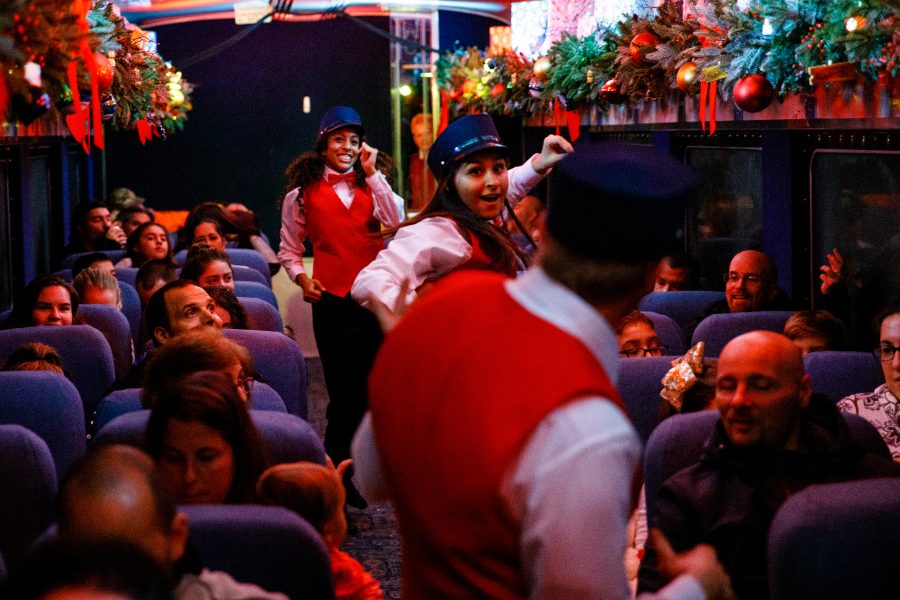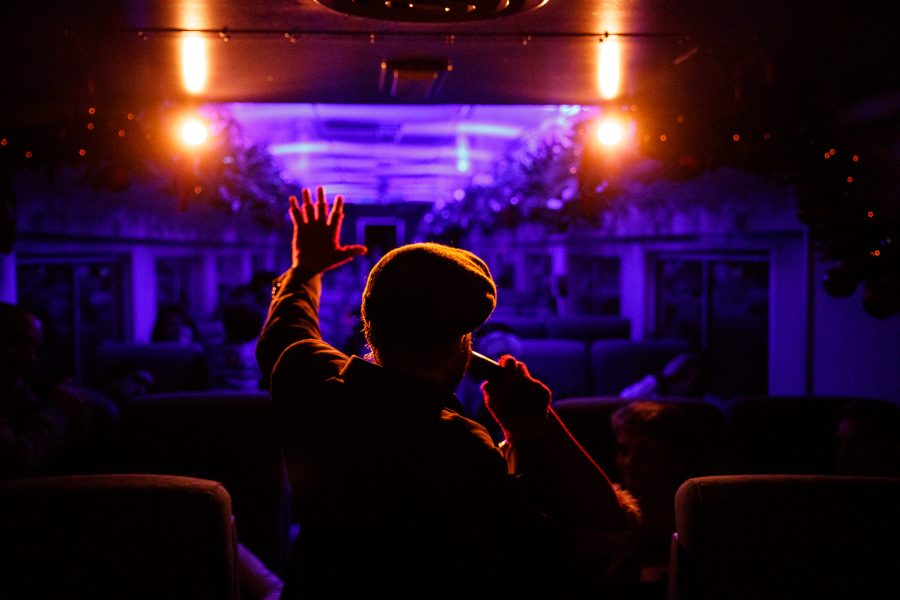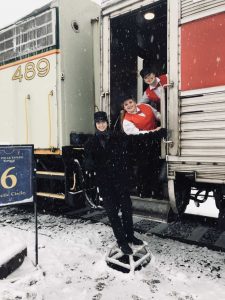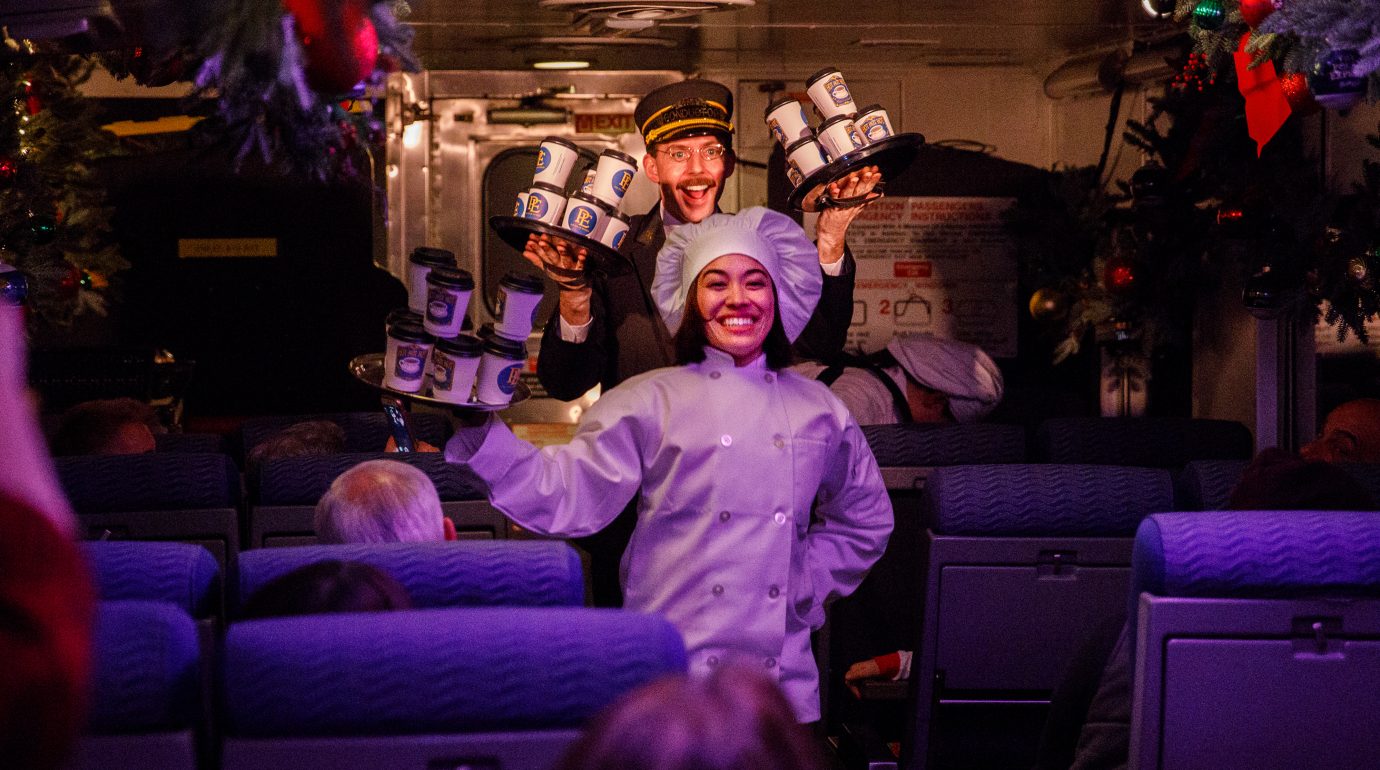It’s no secret to theatregoers that dozens upon dozens of adaptations of Charles Dickens’ A Christmas Carol are presented in community and regional theatres across the country each holiday season. In fact, appearing in a production of that timeless classic was how I spent my holiday season last year. Surrounded by community members who looked forward to performing in the show or being an audience member, I began to understand why the play is a staple in the American theatre and why it continues to be performed annually.
But for every well-worn tradition, there is the effort to add a new one. And you might say that Santa brought me a very different theatrical holiday experience to unwrap this year. A few months back, a friend suggested I go to an audition with him for The Polar Express Train Ride, an interactive holiday show in Whippany, N.J., based on the movie released in 2004. Why not? I thought, fondly remembering the first time I’d seen the holiday movie with my cousins. Maybe holiday shows could be my calling.
I received my contract a few weeks later, and then dealt with the usual questions that come from friends and family when I’m get cast in something new. “Oh, what theatre are you doing Polar Express in?” I would laugh and inform whoever asked that it was in fact to be performed on a real moving train. That answer yielded a set of additional and often ridiculous questions: “Do you guys rehearse on the subway?” “Is it just like NJ Transit?”
The concept shouldn’t be that all that surprising, given the new popularity of immersive shows. “It’s Sleep No More meets your favorite holiday show,” I’ve joked with people—only half-joked. The ride is designed to allow passengers the opportunity to step onto the Polar Express, complete with golden tickets, hot chocolate, sugar cookies, caroling, and a visit to the North Pole. As actors on the train, our job is to guide passengers through the whole experience. We learn their names, emboss their tickets with a “special stamp made just for them,” and essentially help author their journey. In many ways, they’re the stars, and we’re merely their supporting cast.

The unconventional nature of the production made the rehearsal process an adventure, to say the least. I play one of the Stewards, one of about 21 other girls. But unlike any show I’ve ever been in, every single person’s track is unlike anyone else’s in the cast. While every audience member on the train essentially sees the same show, every event happens in a different sequence. It’s overwhelming and exciting all at the same time, and more than anything I’m so in awe that so many moving parts (literally) came together. The train is composed of six cars, with each car having 3-4 actors. While two casts perform on the train, another cast performs outside the train at the North Pole, with a total of 50 or so actors. But there are so many other people in this project beyond the actors that passengers interact with: lighting designers, train masters, caterers, police officers, sound engineers, and prop masters who work on the train each day; the production physically couldn’t run without any of them. Hundreds of people put countless hours into bringing the ride to life for the passengers that come aboard for the hour-long ride.
In college, I often performed in nontraditional spaces: dorm basements, dining halls, hallways, the library, outdoors. But I can say with confidence that no space has challenged me as an actor as much as performing on a moving vehicle. My director would joke in rehearsal all the time that a train is the worst place to put on a performance. I’m reminded of this often during performances, when a jolt causes me to pivot right into a passenger or when a sudden stop results in spilled hot chocolate and tears from children.
But the impact such a space can have on a performance has also become clear to me, as I watch children go wide-eyed when the train starts to move; some of them have never ridden on a train, let alone The Polar Express. I now can’t imagine doing this show in a traditional theatre setting, even with the challenges that come with being in constant motion (I couldn’t shake the feeling of having vertigo after the first week of performances).

Performing in Polar has accordingly expanded my idea of what performance is. We practically encourage audience members to be as loud as they want, to eat and drink as much as they want, and to feel free to engage in flash photography. It goes against everything we’ve been taught about proper audience etiquette. Consequently there are so many times in this performance where the fourth wall crumbles, where it seems so easy to be taken out of the performance.
I had a mother approach me at the beginning of one of the shows. “So is Santa really going to come on the train?” she asked me. “Who knows—it is a magic train!” I said, smile never leaving my face, attempting to maintain the element of surprise. Another one of my favorite questions is when parents ask where exactly the North Pole is, clearly unsatisfied to hear that it’s “past the woods and through the mountains.” I’ve had fellow cast members recount stories of children asking for another hot chocolate while they were mid-song. As performers, we’re accustomed to the idea that no one would dare interrupt us during a performance. I’ve had to change my perspective for this project, accepting and even embracing all audience interaction as part of the performance. I’m grateful: It’s taught me to think on my feet.
We encounter all different types of children: Some nap the whole time, some are glued to their iPad, some are on the cusp of not buying the whole thing. These are the ones we hear saying, “That’s not the North Pole! You just dressed it up!” or “That’s not really Santa. I saw him in my mall last week.” Yes, Virginia, there is a Santa Clause, and yes, The Polar Express really does go to the North Pole—if you, to quote the Josh Groban song that plays at the ending of the ride, “just believe.”

For all the doubters, there are so many other children who come aboard who make your day brighter, who smile in awe at you, and who truly want nothing more than to have this experience. I’ve had teary-eyed parents say to me that their kid has waited all year for this. Others tell me that I’ve created a whole new holiday tradition for their family. Seeing families spend time together and interact on the ride is one of my favorite parts.
One of my jobs during the show is to take photographs of families after (spoiler alert) Santa boards the train. It is consistently one of my favorite parts of the ride, because I love capturing the single moment as these families, often decked out in matching pajamas, make a special memory. I reflect on my own childhood, and how quickly it seemed to have came and went for me. I take each photograph, knowing the children will soon grow up and the bell will stop ringing for them—but for this special hour aboard the ride, each passenger becomes five years old again.
I’d say that’s a bit more magical than the subway.
Laura Mullaney is a performer and writer from New Jersey. She served as American Theatre‘s editorial intern for the fall/winter of 2017.


